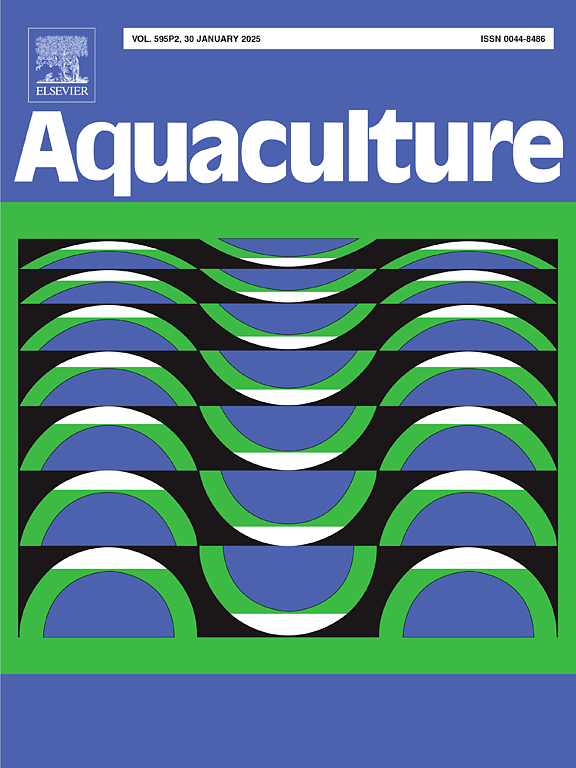海桐无性繁殖和成熟海桐植物层微生物多样性和代谢组的比较分析
IF 3.9
1区 农林科学
Q1 FISHERIES
引用次数: 0
摘要
Pyropia haitanensis 的生产在很大程度上依赖于海螺的成熟。然而,海坛藻的海螺发育时间较长,这限制了海坛藻的工厂化养殖。藻类的发育与藻层微生物群落密切相关,但人们对这些微生物群落在不同海螺生命阶段的变化知之甚少。本研究采用 16S rRNA、ITS 基因测序和非靶向代谢组学方法,比较和分析了丝状海螺和孢子囊小枝阶段的藻层微生物群落和代谢物。我们发现 19 种微生物的丰度存在显著差异,并与 10 种关键代谢物建立了显著的正相关关系。这些发现表明,在海螺成熟过程中,植层微生物积极参与代谢物的合成,影响发育、防御反应、激素水平、硫代谢、蛋白质和光合色素的合成。丝状球果和孢子囊小枝阶段的微生物差异是代谢物积累的重要因素,这凸显了植层微生物与代谢物之间的相互联系。我们的研究为利用有益微生物促进球果成熟提供了理论指导。本文章由计算机程序翻译,如有差异,请以英文原文为准。
Comparative analysis of phycospheric microbial diversity and metabolome between vegetative and matured conchocelis of Pyropia haitanensis
Pyropia haitanensis, relies heavily on conchocelis maturation for its production. However, the prolonged conchocelis development time limits the factory breeding of P. haitanensis. The development of algae is closely concerned in phycospheric microbial communities, yet little is known about the variations in these microbial communities across different conchocelis life stages. This study employed 16S rRNA, ITS gene sequencing and untargeted metabolomics to compare and analyze the phycospheric microbial communities and metabolites between filamentous conchocelis and sporangia branchlet stages. We identified 19 microorganisms with significantly different abundances and established a significant positive correlation with 10 key metabolites. These findings suggested that phycospheric microorganisms actively participated in metabolite synthesis during conchocelis maturation, influencing development, defense response, hormone levels, sulfur metabolism, protein and photosynthetic pigment synthesis. The differential microorganisms between filamentous conchocelis and sporangia branchlet stages were a vital factor in metabolite accumulation, highlighting the interconnectedness between phycospheric microorganisms and metabolites. Our research provided theoretical guidance for utilizing beneficial microorganisms to facilitate conchocelis maturation.
求助全文
通过发布文献求助,成功后即可免费获取论文全文。
去求助
来源期刊

Aquaculture
农林科学-海洋与淡水生物学
CiteScore
8.60
自引率
17.80%
发文量
1246
审稿时长
56 days
期刊介绍:
Aquaculture is an international journal for the exploration, improvement and management of all freshwater and marine food resources. It publishes novel and innovative research of world-wide interest on farming of aquatic organisms, which includes finfish, mollusks, crustaceans and aquatic plants for human consumption. Research on ornamentals is not a focus of the Journal. Aquaculture only publishes papers with a clear relevance to improving aquaculture practices or a potential application.
 求助内容:
求助内容: 应助结果提醒方式:
应助结果提醒方式:


